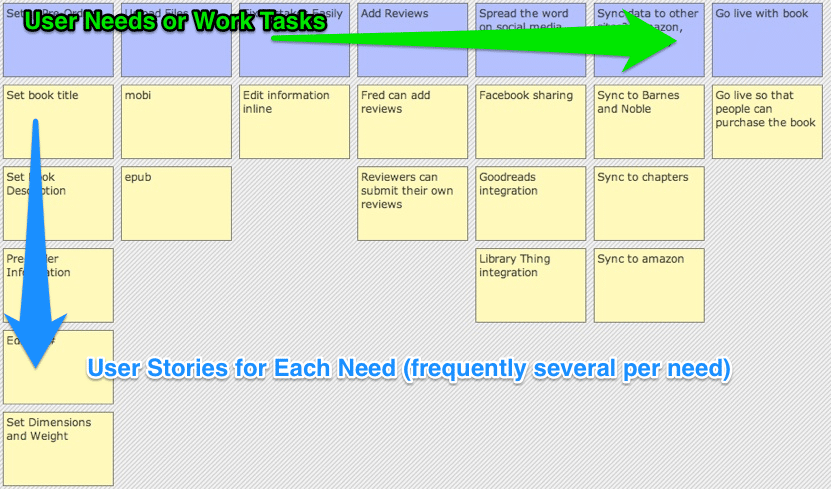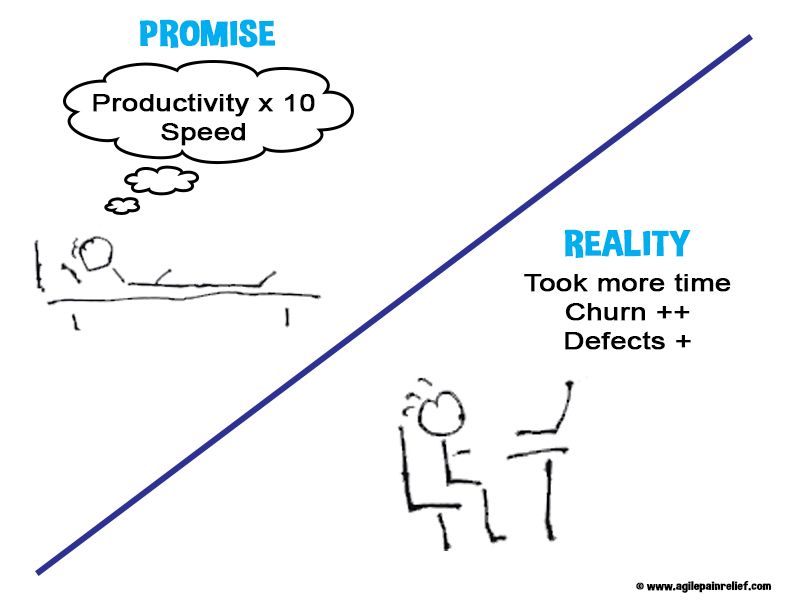Learning Story Mapping Through Exercises

Story Mapping is a simple tool to help you visualize your Product Backlog. The traditional Product Backlog in Scrum is a real improvement over traditional methods for tracking and understanding the work ahead. However it’s still a long To Do List which has some issues:
- It’s hard to see the forest for the trees.
- It’s easy to miss important items in the morass of detail.
- It’s hard to prioritize well since we can’t see the big picture.
- It’s not explicitly focused on the user needs.
In other words, flat lists become confusing as the Product grows in size and complexity.
Story Mapping is a tool to help overcome these issues by helping the team visualize the needs of the end-users. Along the top we write out all the “User Needs”. On the Y-axis we create the Stories for each “Need” or task. Some “User Needs” aren’t of interest in the current release – so they might get no Stories. Other needs have a number of things that need to be done for them – so they get many Stories. In addition, each user gets their own map.

The key here is that the map acts as a tool to help organize the Stories. The map helps us spot gaps in our product and helps us discover the priorities. However, most importantly Story Maps help start conversations among team members about what we’re building.
The files below are from a series of Story Mapping workshops that I have facilitated in Montreal, Toronto and Kitchener-Waterloo this past year. If you would like to bring me into your company to facilitate a Story Mapping Workshop or teach a Product Owner course please contact us.
The files make the most sense if you’ve attended the workshop.
- StoryMappingWalkThrough - the keynote presentation I run in the background.
- Story Mapping Basics - the basic introductory handout that all attendees get. It outlines some of the basic ideas behind Story Mapping and provides the core scenario for the exercises
- Julia Persona and Rob Persona - the personas that the audience gets to use for their exercises.
Photo by Mark Levison. Image by Agile Pain Relief.

Mark Levison
Mark Levison has been helping Scrum teams and organizations with Agile, Scrum and Kanban style approaches since 2001. From certified scrum master training to custom Agile courses, he has helped well over 8,000 individuals, earning him respect and top rated reviews as one of the pioneers within the industry, as well as a raft of certifications from the ScrumAlliance. Mark has been a speaker at various Agile Conferences for more than 20 years, and is a published Scrum author with eBooks as well as articles on InfoQ.com, ScrumAlliance.org and AgileAlliance.org.
